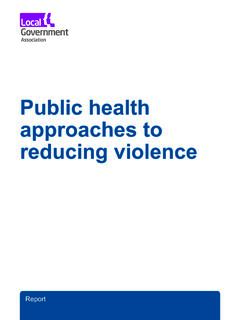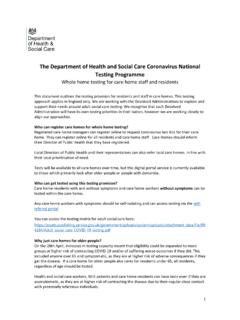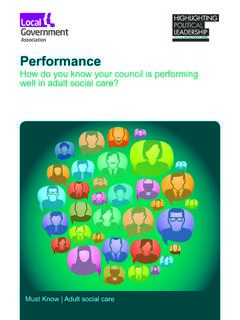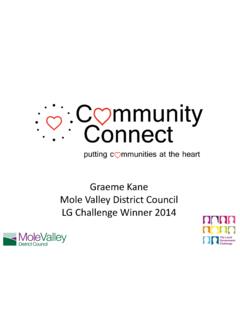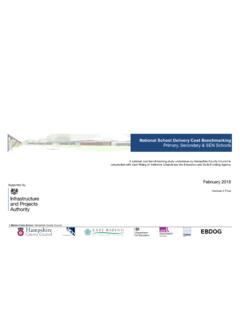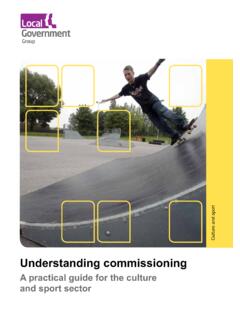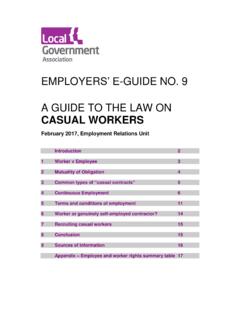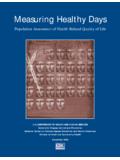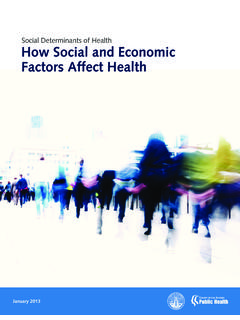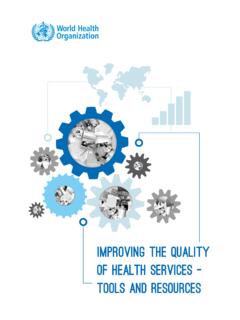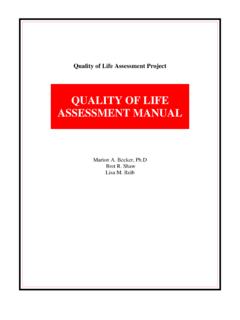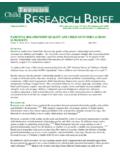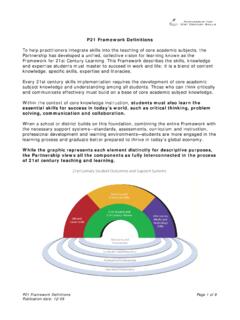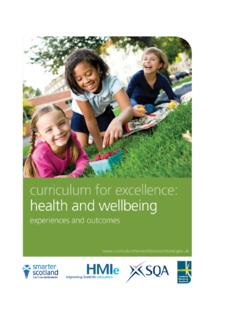Transcription of A key role for health visiting services
1 1 Improving outcomes for children and families in the early yearsCase studiesCase studiesImproving outcomes for children and families in the early yearsA key role for health visiting services Case studiesFront cover credits: Institute of health Visiting3 Improving outcomes for children and families in the early yearsForeword 4 What do health visitors do? 5 Why is health visiting important? 6 How is the service delivered? 8 Local government s new role 9 Case studies 10 Universal 10 Birmingham 10 West Sussex 11 Leicester City, Leicestershire and Rutland 12 Universal Plus 13 Nottingham City Council 13 Hull City Council 14 Enfield 15 Universal Partnership Plus 16 Norfolk 16 Solent 17 Wolverhampton 18 Community 19 Walsall 19 Integration
2 20 Haringey 20 Redcar and Cleveland 21 Cheshire East 22 Want to find out more? 23 Contents4 Improving outcomes for children and families in the early yearsForewordHealth visitors have a long history. The role dates back to the 1860s and over the years they ve been there for many millions of families, providing valuable support in those early years. That continues today with parents now guaranteed five visits before their child turns 2015 health visiting was brought into the local government fold for the first time since 1974. It gives councils a unique opportunity to build on what has been achieved and help make progress in key areas of public consider the four domains of the current public health outcomes framework: improving the wider determinants of health , health improvement, health protection and reducing premature mortality.
3 health visitors can have an impact on all of them through their work in supporting families in the early years, identifying those in need of extra help and ensuring good uptake of immunisations programmes. The result of such support cannot be under-estimated. It builds resilience, encourages healthy lifestyles and aids social and emotional development. So it has been welcome that we have seen a significant investment in health visiting in the past five years. The numbers were increased and the service has been transformed. But what can councils do to continue and build on this momentum?As with so much of public health , the move into local government offers fresh opportunities. By integrating health visiting with other services , such as children s centres, early help, safeguarding and public health teams, we can provide better support to children and their At the time of writing the regulations which mandate that health visitors must deliver five checks were under review.
4 But of course times are tough. Austerity is biting hard and public health funding is being squeezed. Councils have to juggle competing demands and deliver with scarce no mistake, though, what happens at the start of life has a major impact on the life chances of children. health visiting services , working in partnership with other health and community services , can help ensure that start is positive. What could be more important than that?Councillor Izzi Seccombe Chair, Community Wellbeing Board Councillor Richard Watts Chair, Children and Young People Board5 Improving outcomes for children and families in the early yearsHealth visitors are registered nurses or midwives who have completed extra training in specialist community public health nursing. They lead or form part of a wider health visiting team that can also include nursery nurses, health care assistants and other specialist health professionals.
5 They lead and deliver the Department of health s healthy child programme (HCP) for children aged 0 to five along with other health and social care colleagues, including family nurse partnership teams. The HCP goes on to cover those aged five to 19, but this element involves school nurses rather than health HCP is offered to all families and the core elements include health and development reviews, screening, immunisations, social and emotional development, support for parenting and health promotion. The National Institute for health and Care Excellence describes health visiting as a vital service which can build resilience and reduce costs later in life, tackle inequalities and promote healthy lifestyles . It says the service offers a unique opportunity to reach out to families because it is valued and accepted as a universal HCP and health visiting became the responsibility of councils in October 2015, completing the transfer of public health functions from the NHS to local vision for health visiting was set out five years ago with the launch of the health Visitor Implementation Plan in 2011, a joint initiative between the Department of health , NHS England, Public health England and health Education the heart of the plan was improved access, experience and outcomes for all families.
6 To enable this to happen the government promised to increase the health visiting workforce, to make up for an earlier fall in staff numbers and an increase in the birth rate. Although the target of 4200 extra health visitors was (just) missed, the workforce increased to the point of enabling a minimum floor of one full time health visitor for each 300 children under five years to be employed. What do health visitors do?Credits: Institute of health Visiting6 Improving outcomes for children and families in the early years1 six areas1 below have a high impact on improving the health and wellbeing outcomes of children and families. health visitors through their delivery of the 0-5 Healthy Child Programme make a significant contribution to each of to parenthood and the early weeks Transition to Parenthood and the first 1001 days from Conception to age 2 is widely recognised as a crucial period in the life course of a developing child.
7 We know that 80% of brain cell development takes place by age three. There is a significant body of evidence that demonstrates the importance of sensitive attuned parenting on the development of the baby s brain and in promoting secure attachment and visitors are trained in a variety of parenting programmes, targeted and universal and they can signpost to a wide range of information and services . Maternal mental health Mental health problems in the perinatal period are very common, affecting up to 20% of women. Perinatal mental illnesses cost the NHS and social services around billion for each annual cohort of births. A significant proportion of this cost relates to adverse impacts on the visitors undertake additional training and are skilled in assessing mental (initiation and duration) Breastfed infants have a reduced risk of respiratory infections, gastroenteritis, ear infections, allergic disease and Sudden Infant Death Syndrome.
8 Breastfed infants may have better neurological development and be at lower risk of tooth decay and cardiovascular disease in later life. Breastfeeding can be protective against obesity, particularly in those who are genetically predisposed ; breastfeeding for 3 months in the first year of a baby s life reduces the risk of obesity by 7%. Women who breastfeed are at lower risk of breast cancer, ovarian cancer and hip fractures from reduced bone visitors are able to provide practical help and advice to mothers on how to breastfeed, help with managing and resolving breastfeeding problems and building community capacity to support breastfeeding by working with communities to establish peer support and is health visiting important?7 Improving outcomes for children and families in the early yearsHealthy weight, healthy nutrition (including physical activity) Children who are overweight are at increased risk of poor health outcomes such as type 2 diabetes and poor mental health .
9 Childhood obesity is a significant health inequality with higher rates amongst children in disadvantaged areas and some ethnic visitors during routine contacts have the opportunity to support health promotion and healthy lifestyles, using evidence - based techniques such as promotional and motivational interviewing. Managing minor illnesses and reducing hospital attendance/admissions Illness such as gastroenteritis and upper respiratory tract infections, along with injuries caused by accidents in the home, are the leading causes of attendances at Accident & Emergency (A&E) and hospitalisation amongst the under 5s. Unintentional injuries are also a major cause of morbidity and premature mortality for children and young people in England. Dental extractions are one of the most common reasons for anaesthesia in under 5s and tooth decay is now a leading cause of parents seeking medical help and visitors are able to provide help and support to new parents on a range of common minor childhood illness such as fever, cough and colds, vomiting and diarrhoea and also oral health .
10 health , wellbeing and development of the child aged 2: Two year old review (integrated review) and support to be ready for school Age 2-2 is a crucial stage when problems such as speech and language delay, tooth decay or behavioural issues become visible and good quality evidence based early intervention improves visitors can intervene to address additional need, providing evidence based support and work with early years providers, school nurses and other community resources to support children to be ready for part of the health Visitor Implementation Plan, a new model of service organisation was developed so the additional staff would be delivering a well-evidenced and improved service. Across the country, the health visiting service has adopted what is known as the 4, 5, 6 model . This encompasses 4 levels of service, 5 mandated elements and 6 high impact of service: Community (broad knowledge of local resources, including children s centres and self-help groups) Universal (the five key visits) Universal Plus (provide families with access to expert advice and support on issues such as postnatal depression, weaning and sleepless children) Universal Partnership Plus (support families with children with complex needs, such as long-term conditions both themselves and linking them with local services )How is the service delivered?
